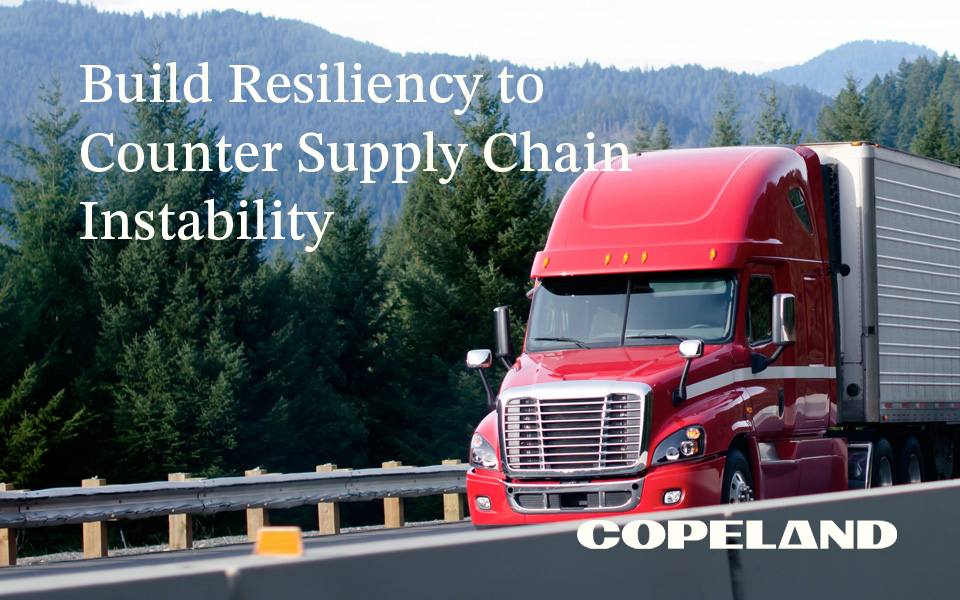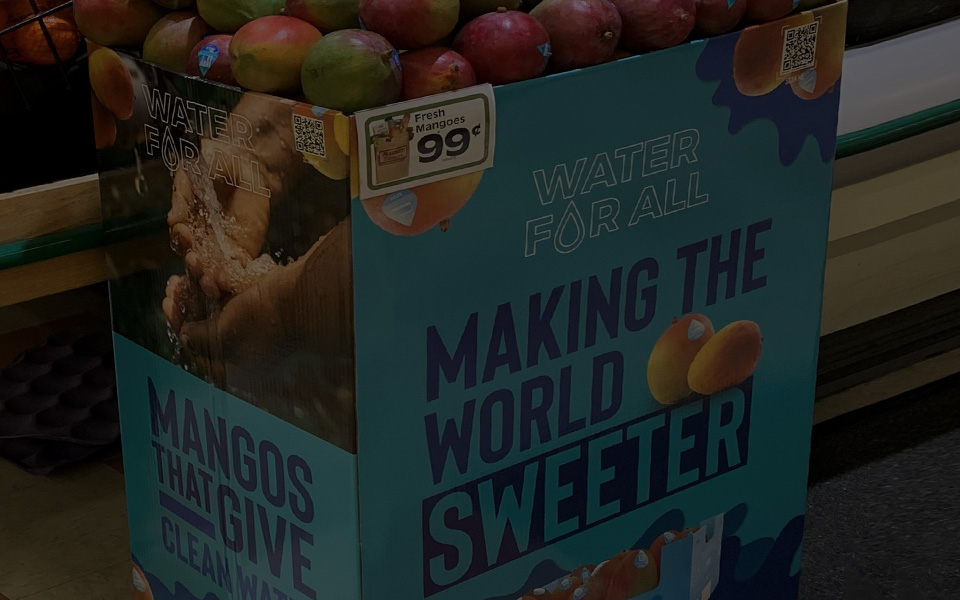Build Resiliency to Counter Supply Chain Instability

*On June 1, 2023 Emerson’s Climate Technologies business became a new standalone company – Copeland. Though our name has changed, we are building on more than a century of HVACR innovation and industry leadership, and Copeland continues to offer the same products, industry stewardship, and learning opportunities you’ve grown to trust. Information found on this webpage posted before June 1, 2023 may contain our old name or branding, but you can be at ease knowing it was created with the knowledge and expertise of Copeland.
Events over the past few years have placed unprecedented pressures on the global supply chain. If I had to summarize these challenges and trends in one word, it would be “instability”. Since COVID-19 emerged, instability has permeated nearly every aspect of the perishable cold chain — and experts don’t expect a return to normalcy for 2–3 years. I recently contributed to a Food Logistics article where I shared how our Oversight cargo software and services can help build resiliency in the face of these challenging supply chain conditions.

The supply chain — and stakeholder expectations — have evolved significantly in recent years. Research in 2020 from the McKinsey Global Institute found that companies historically experience a supply chain disruption of 1–2 months every 3–4 years. Today, more than 50 percent of executives don’t anticipate a full supply chain recovery until the first half of 2024 or beyond, while 22 percent expect disruptions to continue until the second half of 2023.
Meanwhile, labor and trucker shortages, port and rail strikes, rising fuel costs, geo-political and economic uncertainties, and associated challenges persist. According to a recent survey, 89 percent of companies have experienced some form of disruption over the last 2 years, stemming from a variety of conditions:
- 56 percent cited staff shortages.
- 48 percent experienced supply chain issues and increased business costs.
- 44 percent noted increasing technology costs.
For cold chain stakeholders, this instability creates more opportunities for errors and risks to food safety, such as: incorrect holding temperatures, improper shipping and handling procedures, tampering and theft.
Fill the gaps in cold chain quality control processes
Without question, perishable producers, shippers and retailers need to be more resilient to succeed and thrive in both current and future states of the global supply chain. Unfortunately, many enterprises are struggling to increase resiliency and lack a dedicated team needed to implement process improvements.
Being resilient means having the tools, visibility and insights to respond to issues in real time, predict disruptions before they occur, and prepare for any eventuality. It also means having access to dedicated teams of experts to fill in the gaps of knowledge, staff shortages and quality control (QC) processes. The Oversight platform is designed to remove blind spots and build much-needed supply chain resilience.
Having access to real-time data is more important than ever in being able to evaluate if supplies can keep up with demand. The Oversight platform platform helps suppliers monitor and track the temperatures and locations of in-transit shipments — enabling stakeholders to eliminate the element of surprise and intervene when needed to protect quality and safety. Retail and restaurant operators can be certain about when their shipments will arrive and have confidence in knowing that shipments were kept at the correct temperatures throughout their routes.
Enabling real-time visibility is only one way the Oversight platform helps companies build resiliency in their supply chains. By compiling data points from previous shipments, the Oversight platform can perform a much more detailed analysis to reveal deeper insights and long-term trends, such as:
- Benchmarking shippers or shipping lanes where temperature excursions occur most frequently
- Pinpointing products that are most susceptible to temperature issues
- Uncovering seasonal and geographic factors that impact reefer temperatures
- Identifying distribution centers (DCs) that may be allowing careless cold chain management
In challenging times like these, data provides an objective record of cold chain temperatures in-transit, effectively taking the emotion out of inspections, disagreements and claims processing. Producers, truckers and retailers can’t afford the negative impacts and costs of rejected loads, and historic trip logs can serve as final arbiters of disputes — providing indisputable proof of precisely when and where temperature excursions occurred.
For many companies that simply don’t have the internal resources to manage supply chain complexities or respond to issues as they occur, the Oversight platform solution offers expert professional consultative services. Our teams can supplement your QC teams by providing the precise level of support you need or offer a fresh analysis and perspective on your most persistent cold chain challenges.
Combined, the Oversight cargo software and services can help stakeholders to prepare for the unexpected and protect against the next supply chain disruption. To learn how to build resiliency into your supply chain, please visit our website to learn more about the Oversight platform.

Six Ways to Reduce Food Waste by Tracking the Supply Chain
by Gerd Uitdewilligen | Cold Chain
*On June 1, 2023 Emerson’s Climate Technologies business became a new standalone company –...

Protect Valuable Shipments in High-Crime Areas
by Lissandra Rodriguez | Cold Chain
*On June 1, 2023 Emerson’s Climate Technologies business became a new standalone company –...

Real-time Tracking Protects Valuable Mango Cargo
by Andres Toro | Cold Chain
*On June 1, 2023 Emerson’s Climate Technologies business became a new standalone company –...
The post Build Resiliency to Counter Supply Chain Instability appeared first on Copeland.